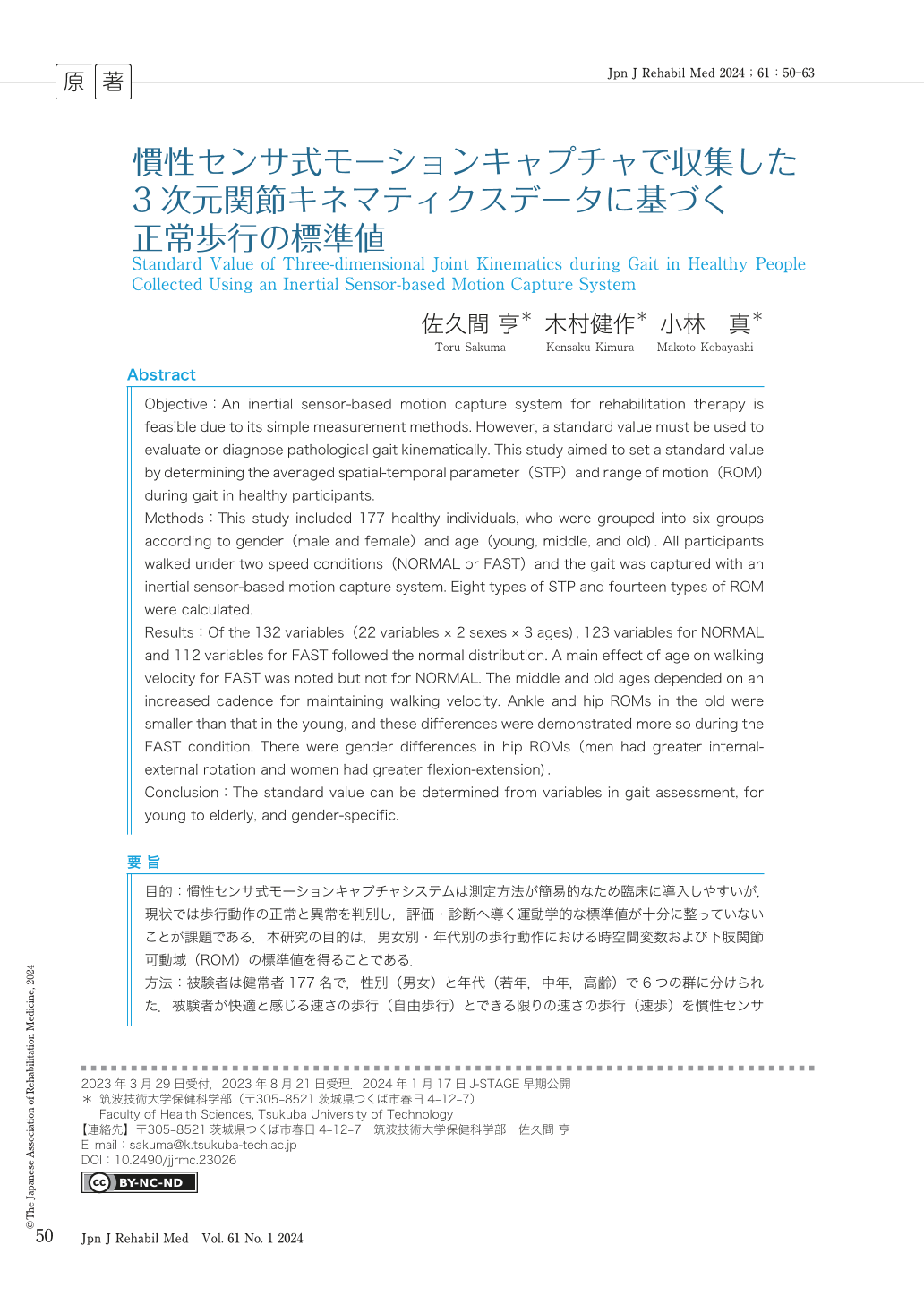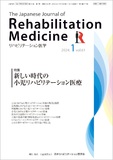Japanese
English
- 販売していません
- Abstract 文献概要
- 1ページ目 Look Inside
- 参考文献 Reference
要旨 目的:慣性センサ式モーションキャプチャシステムは測定方法が簡易的なため臨床に導入しやすいが,現状では歩行動作の正常と異常を判別し,評価・診断へ導く運動学的な標準値が十分に整っていないことが課題である.本研究の目的は,男女別・年代別の歩行動作における時空間変数および下肢関節可動域(ROM)の標準値を得ることである.
方法:被験者は健常者177名で,性別(男女)と年代(若年,中年,高齢)で6つの群に分けられた.被験者が快適と感じる速さの歩行(自由歩行)とできる限りの速さの歩行(速歩)を慣性センサ式モーションキャプチャシステムで計測した.歩行標準値として8つの時空間変数と14カ所の下肢ROMを算出した.各変数について測定値分布を確認するとともに性と年齢の影響を分散分析で調べた.
結果:全132変数(22変数×2性別×3年代)のうち自由歩行では123変数,速歩では112変数が正規分布とみなすことができた.歩行速度への年齢の主効果は速歩で認められたが自由歩行では認めなかった.中年群と高齢群では歩行の速度維持においてケイデンスへの依存が大きかった.高齢群は若年群と比べて足関節と股関節ROMが小さく,その違いは自由歩行よりも速歩において顕著であった.股関節ROMには性差があり,男性は内・外旋が大きく,女性は屈曲・伸展が大きかった.
結論:自由歩行および速歩の歩行標準値は,男女別の若年者,中年者および高齢者の歩行評価における変数として使用できる.
Abstract Objective:An inertial sensor-based motion capture system for rehabilitation therapy is feasible due to its simple measurement methods. However, a standard value must be used to evaluate or diagnose pathological gait kinematically. This study aimed to set a standard value by determining the averaged spatial-temporal parameter (STP) and range of motion (ROM) during gait in healthy participants.
Methods:This study included 177 healthy individuals, who were grouped into six groups according to gender (male and female) and age (young, middle, and old). All participants walked under two speed conditions (NORMAL or FAST) and the gait was captured with an inertial sensor-based motion capture system. Eight types of STP and fourteen types of ROM were calculated.
Results:Of the 132 variables (22 variables × 2 sexes × 3 ages), 123 variables for NORMAL and 112 variables for FAST followed the normal distribution. A main effect of age on walking velocity for FAST was noted but not for NORMAL. The middle and old ages depended on an increased cadence for maintaining walking velocity. Ankle and hip ROMs in the old were smaller than that in the young, and these differences were demonstrated more so during the FAST condition. There were gender differences in hip ROMs (men had greater internal-external rotation and women had greater flexion-extension).
Conclusion:The standard value can be determined from variables in gait assessment, for young to elderly, and gender-specific.

Copyright © 2024, The Japanese Association of Rehabilitation Medicine. All rights reserved.


